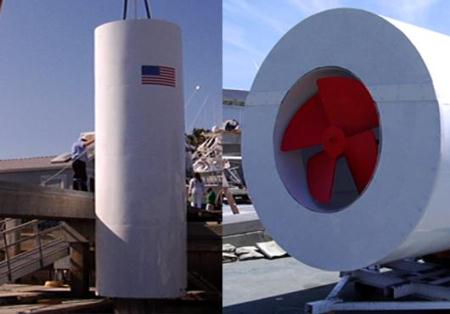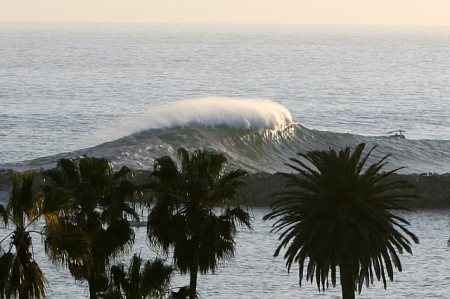On five occasions since 2009, the owners of Newport Beach, Calif.-based Green Wave Energy have tested their prototype Green Wave Generator about 200 yards offshore from the famed surfing swell, “the Wedge.” According to the company, the results of those preliminary tests have shown that a 1-megawatt array of turbines installed in a location with 2-meter swells can generate power for as little as 5 cents per kilowatt-hour, and achieve a payback period of 2.1 years.
Now, according to the Los Angeles Times, Green Wave Energy is trying to take its field testing to the next level. The company is seeking permission from city officials to install a more permanent prototype at one of Newport Beach’s two piers.

The Green Wave Generator itself is a structurally reinforced fiberglass cylinder housing a large propeller connected to an electric generator. Unlike other wave turbines, which are situated horizontally on the ocean’s surface; the Green Wave Turbine is vertically anchored into a fixed location outside the breakers, with just its top peeking out of the water. The Green Wave generator harvests the energy of water rising and falling through the cylinder, turning the propeller, and transmits the energy to a land-based substation. The five-kilowatt turbines can be scaled up and deployed in any number of units, depending on the location and the electricity production goals.
But it can be difficult for startups like Green Wave Energy to break into the emerging wave energy sector. Large companies like Kawasaki and Rolls-Royce can afford to test their wave energy technologies at world-class testing facilities like the European Marine Energy Center in Orkney, Scotland. But smaller companies like Green Wave Energy face daunting environmental regulations that make it difficult to test their technologies for extended periods of time.
Even Ocean Power Technologies (OPT), whose PowerBuoy wave generator has been fully vetted at multiple testing sites, has still not successfully deployed a multi-generator array in the U.S. OPT has been trying to deploy its first commercial wave power project on the west coast near Reedsport, Ore., since 2010. That project has still not advanced to the deployment stage.

However, several wave energy technologies are finding fertile grounds to deploy wave energy technology in the developing world, where more lenient environmental regulations and sparse energy infrastructure makes it easier for developers to find suitable locations to test their equipment. Several wave energy power plants are either under development or have already been deployed in China, Kenya and Micronesia.
Although Green Wave Energy may not get permission to further test its technology in the waters off Newport Beach, the company says that it is working with government officials to install systems in the West African country of Guinea and off the coast of St. Martin, in the Caribbean.